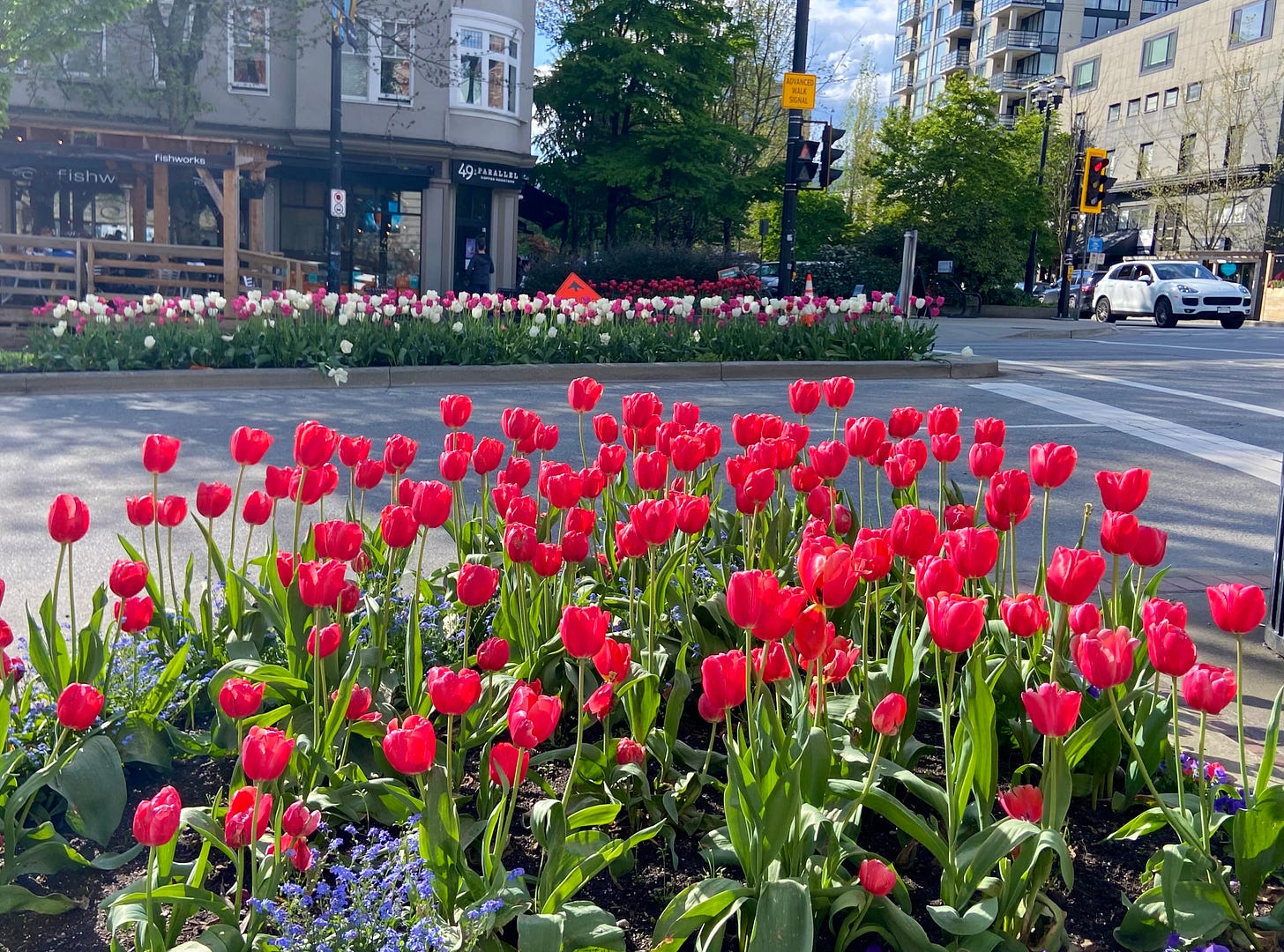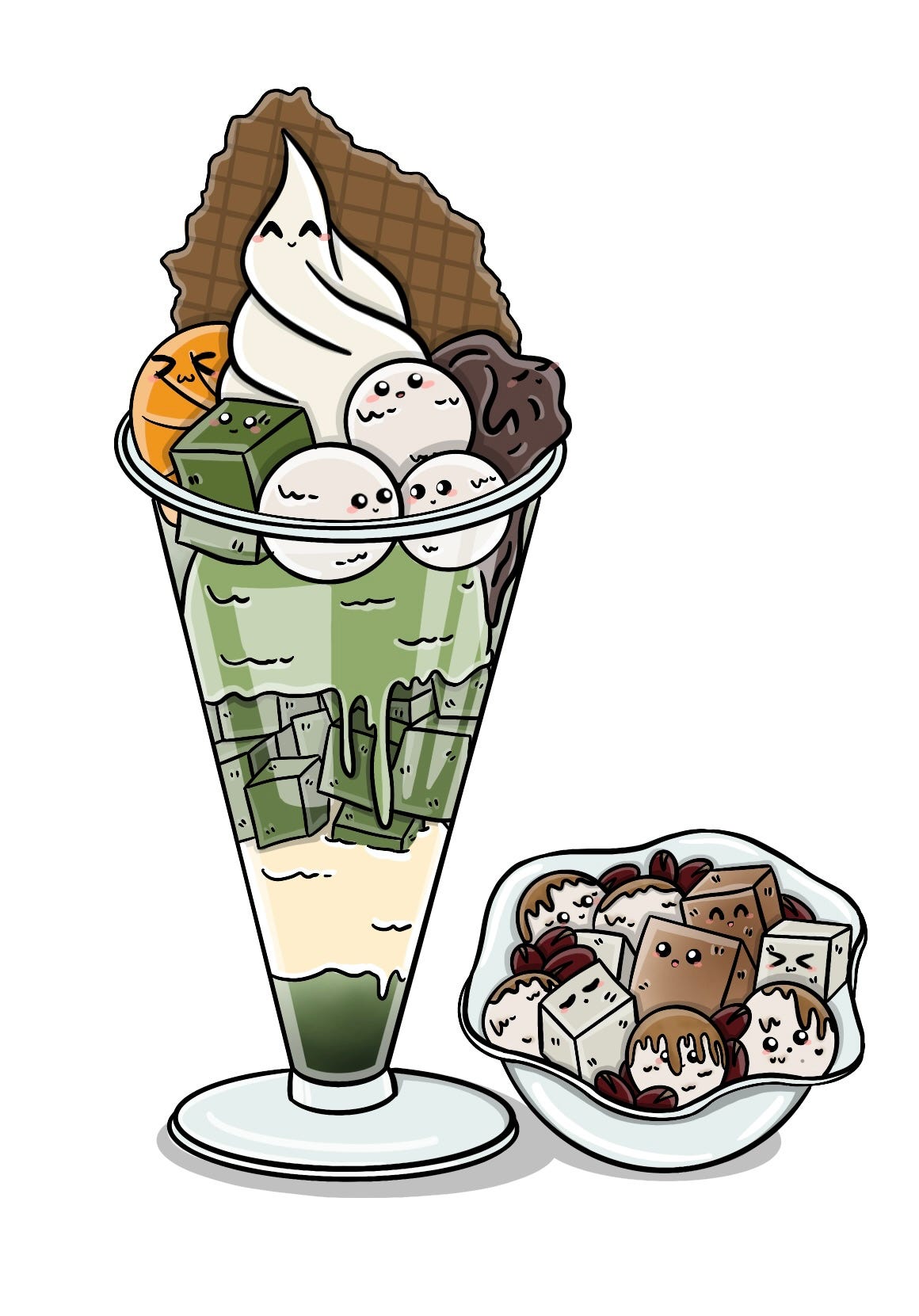Old Enough...but not old enough to walk alone among bears
Hello, friends.
We have turned a corner into spring, and along with the sunshine have come the bears. I didn’t know the Vancouver area had so many bears, but here in North Vancouver, they are not rare. In fact, this winter has been very bear-y, with sightings even during the snowy days of December and January . The bears were not in deep hibernation, and some had stayed up through the entire winter. The North Shore Black Bear Society confirmed this was not normal.
“It’s not unusual for a bear to occasionally come out of the den for a little snack — it’s not often, but it does happen,” [Christine Miller] told CityNews. “But we have had a group of three that have been moving around east of the Seymour River in North Vancouver, where there didn’t seem to be any pause in sightings to indicate that they have hibernated. They just seem to be staying up.”

Why would a bear not hibernate? Possibly climate change. When winters are warmer, bears’ bodies don’t get the signal that they should go into a deep winter sleep. Also, changing weather patterns—extreme drought followed by extreme precipitation—can bring about bounties of bear foods like pine nuts, which makes the long sleep unnecessary because food sources are available even into the winter.
A few days ago a bear was seen wandering around the yards of East Vancouver, nowhere near the woods. It seems the urban-wildlife interface is more and more on the urban side. The interfacing here in the North Vancouver is livelier yet, surrounded as we are by forests that are home to many black bears.
Also during the past week, bears have been spotted around both of Beanie’s school locations, on at least three days. Once, the students watched from the windows of their cabin as a bear frolicked on the hill outside. On another morning after dropping Beanie off with her class, Taz saw a bear crossing the street next to the general store, End of the Line, where he had parked.
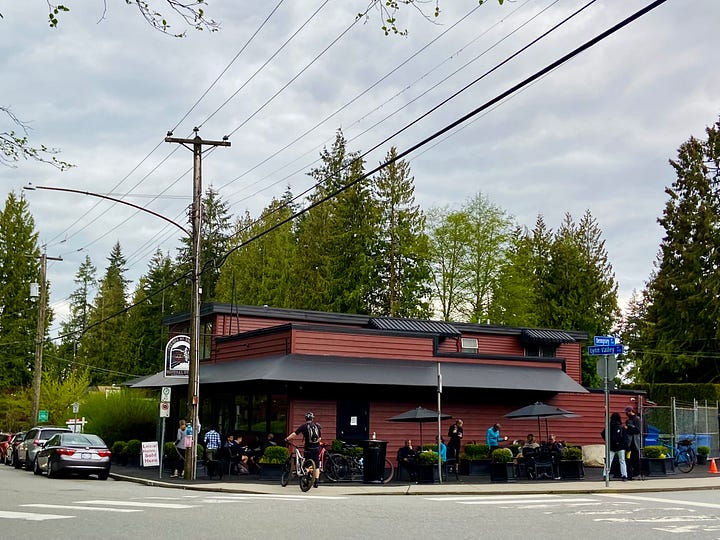
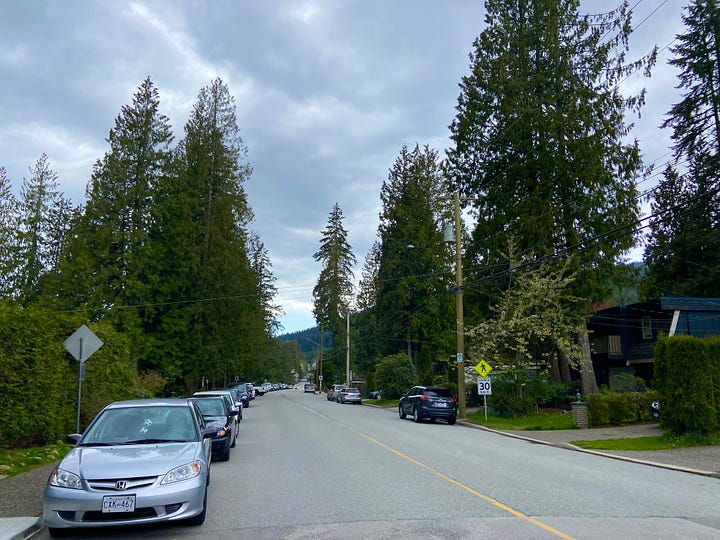
There’s a nice tradition at Beanie’s school: on Thursdays after school lets out, whichever students want to walk over from the forest to End of the Line together will do so in a group. There they spend a few minutes—or more than a few minutes—browsing the candies and toys, and buying themselves a treat to enjoy while they hang out together outside the store.
Beanie didn’t want to join the group at first, I think because purchasing something at a counter by herself was still a new and scary thing for her. Now she has tried it a couple of times, it’s not as intimidating anymore, especially since the payoff is a delicious ice cream or candy bar.
There’s a Japanese show called “Old Enough” that you can watch on Netflix. It follows tiny children, some as young as three years old, as they embark on their first solo errands outside of the house. They totter from village shop to village shop collecting items their mothers have requested, or cross busy city streets to buy ingredients for dinner.
It’s adorable, and whenever I tell (non-Japanese) people who have not watched this show, there are always gasps of surprise. No one, including me, here in North America would send their kids out at three years old to do anything alone. And if we did, someone would call Child Protective Services on us. It’s just a different world we live in.
“She’s now as capable as a Japanese three-year-old,” Taz joked after Beanie’s inaugural walk to the general store. (Though the three-year-olds are walking alone, something Beanie is not quite ready to do yet.)
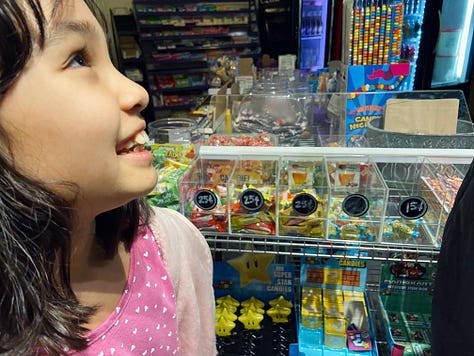
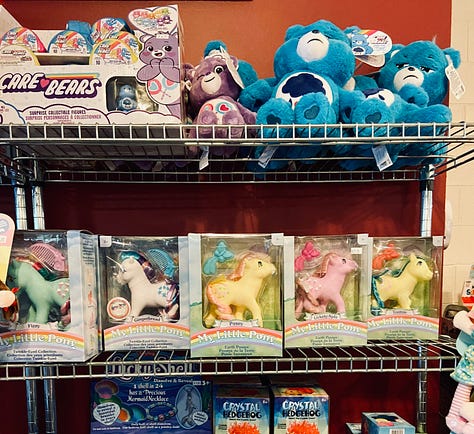
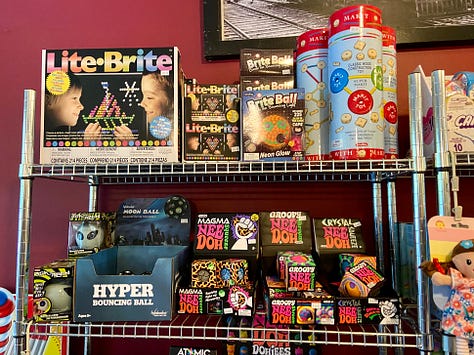
Last Thursday, what with a bear roaming nearby, some parents escorted the kids to End of the Line to keep them safe. Beanie reports that the adults kept some distance and let them walk ahead. No bears were sighted on the walk.
As parents, sometimes it’s hard to discern which of our fears are legitimate and which are unfounded. It does feel quite reasonable to be afraid of bears. Because they are bears. On the other hand, despite the increased human encounters nowadays, black bears are not aggressive and attacks are very rare. Is it safe for the children to walk by themselves to the store? Probably, but I’m glad the adults were around.
We are bombarded in the media by stories of terrible things that can happen to children. With all the noise around us, many people believe children are much less safe than they were when we grew up decades ago. It’s true there are new dangers such as online predation, but child abductions have not increased in North America. The vast majority of abductions are not by strangers either; usually they are by non-custodial parents. The number of child pedestrians struck by cars in the US has also fallen 91% between 1975 and 2020.
But even knowing the statistics, even knowing that what we see out there in the news is distorted toward sensationalism, the rational side of my brain sometimes loses out to the protective parental side of my brain, and I want to make a fence around Beanie that will keep all the bad stuff out. I have to fight against that instinct, so she has space to flourish independently. I have to remind myself that the world out there is not all Danger.
When bears do attack people, the attackers are often mother bears who feel their cubs are being threatened and are trying to protect them. We walk with our children out in the wild, watching that they don’t come to harm, and so do the bears. We humans and bears eye one another warily as we traverse the urban-wildlife interface. Who should fear whom? It’s not totally clear. Best to stay a healthy distance apart; best not to make any mothers mad, because they’ll do whatever it takes to protect their young.
Pretty Good Things
Japanese desserts
I have a bit of an obsession with Japanese anmitsu and parfait desserts. Vancouver has quite a few Japanese dessert cafes, and it delights me because I am simple. Having yummy things nearby makes my steps lighter. I’m mainly sharing this because I asked an artist to create the above illustration for me, and I want an excuse to post it here. But also, a recommendation if you come to the Vancouver area: Nana’s Green Tea, an outpost of the Japanese matcha dessert chain. Beanie and I share a parfait when we go, and we always get some extra shiratama mochi balls. Yum.
Slow travel
I say our family is “slow traveling,” but what does that mean? I’ve used this term in counterpoint to “fast traveling,” the exhausting nonstop movement that comes with packing multiple destinations into a two-week trip. For someone who travels mostly so I can do the same things I do at home—wander and grocery shop and sit in cafes—just in different locations, packed itineraries don’t allow for my favorite activities or for room to breathe.
Condé Nast Traveler has a collection of slow travel stories from all corners of the earth, as well as a piece that attempts to define “slow travel.”
Slow travel is a mindset: you don’t need three weeks of vacation to slow down. A day spent strolling through an unfamiliar neighborhood without a crammed to-do list or exploring a state park with nothing but a route map and a bag of snacks could fall under the umbrella of slow travel. It comes down to how you engage with the world as you move through it.
—Sebastian Modak, in “What does the phrase “slow travel” actually mean?”
This is the HMCS Ottawa badge
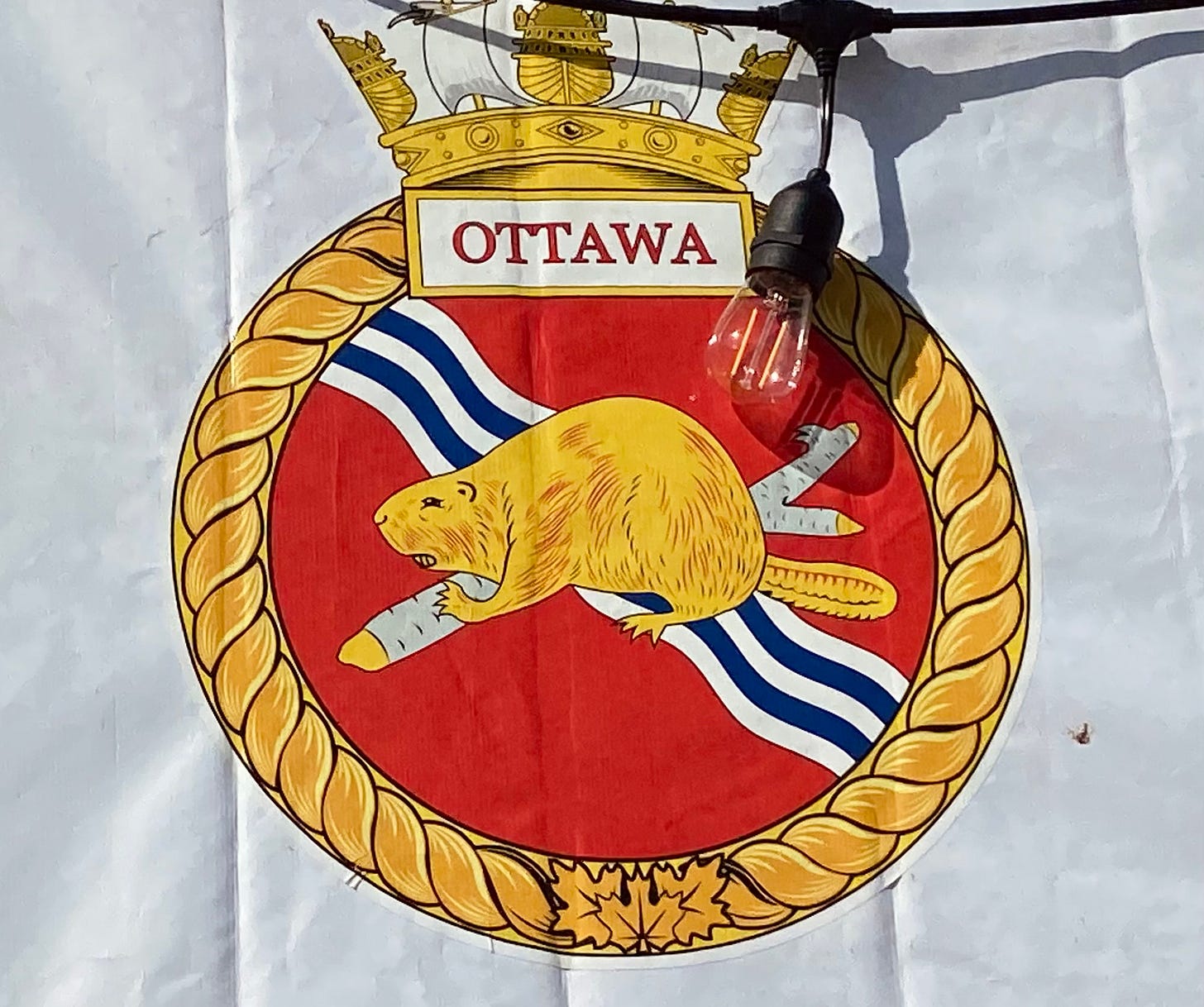
It was just Fleet Weekend in North Vancouver. We were at the North Vancouver Shipyards on Sunday, and chanced upon the HMCS Ottawa and HMCS Nanaimo, two Royal Canadian Navy ships docked and open to the touring public. (HMCS stands for “Her Majesty’s Canadian Ship,” by the way.)
Look at this beaver on the HMCS Ottawa badge! We stared at it for a while. Is it a fierce beaver or an exhausted beaver? To me, it looks like a world-weary beaver who has seen too much. Regardless, this is a very Canadian thing to put on a ship badge. I love it.


